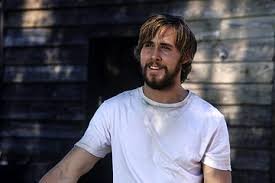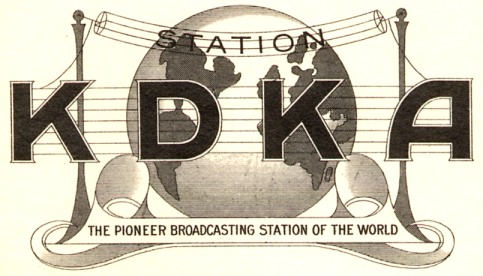The three act structure is one of the most commonly used in Hollywood and is more commonly used with movies that are of adventure, and happy endings. For example:
In the movie
The Notebook which is set the in 1940s Seabrook, North Carolina ,Allie and Noah, begin a summer romance that they assume will last forever. However, the first plot point is the family differences (income wise) between the two characters, Allie has money and Noah does not. Despite that they still love each other. Within this act we have a complication which is Allie's parents tell her she must no longer see Noah because he's not good enough for her or the lifestyle she leads. This ultimately causes them to break-up and move on with their lives in different cites.

In the second act, its seven years later and Noah and Allie's life have taken different routes. She is attending college and meets a handsome and fabulously rich man whom has proposed to her, however, we know she is still very much in love with Noah. On the hand, Noah bought his dream house and rebuilt it the way he had promised Allie when they were young and in love, but he then decided to sell it which brings me to the complication in this act: Allie sees his picture in the paper with the house and all her feelings rush back and she decides to visit him.


The third act, starts off with Noah and Allie seeing each other again for the first time in seven years. After spending a couple of days together the burning question inside of Allie begins to show and the famous rain scene/climax is seen here when Allie shouts to Noah why he hadn't written her in seven years which we then find out he had been, but her mother hid them from her and there love is once again rekindled. However, (complication) Allie must choose between the love of her life or the man her parents want her to be with. She departs from Noah leaving the audience wandering if she will choose him which of course she does (resolution).




 Sitcoms generally follow the same structure. Such as they are episodic in nature which means they are quick, funny, and end where it begins as well as the problem that arose in the beginning is solved by the end of the episode. The show begins with some unrealistic hilarious circumstance in which the character gets involved in some sort of problem (however this doesn’t necessarily have to be a bad situation). Throughout the show the character encounters more problems and after more laughs the show comes to an end with the character figuring out the solution as well as a valuable lesson. However the difference between an episodic sitcom and that of a serial one is that it ends and we never hear about the situation the character experienced in the previous episode where as serial picks up where it left off. For example, in the show Glee each character faces their particular problem that in turn is related to a song throughout the episode. After a few comedic scenes here and there they find that their problems somehow intertwine and a song that is relatable to all of them is sung in the end and within this scene they realize their solution or learn a life lesson, moreover, the next episode will have a clean slate with new problems arising and different solutions found.
Sitcoms generally follow the same structure. Such as they are episodic in nature which means they are quick, funny, and end where it begins as well as the problem that arose in the beginning is solved by the end of the episode. The show begins with some unrealistic hilarious circumstance in which the character gets involved in some sort of problem (however this doesn’t necessarily have to be a bad situation). Throughout the show the character encounters more problems and after more laughs the show comes to an end with the character figuring out the solution as well as a valuable lesson. However the difference between an episodic sitcom and that of a serial one is that it ends and we never hear about the situation the character experienced in the previous episode where as serial picks up where it left off. For example, in the show Glee each character faces their particular problem that in turn is related to a song throughout the episode. After a few comedic scenes here and there they find that their problems somehow intertwine and a song that is relatable to all of them is sung in the end and within this scene they realize their solution or learn a life lesson, moreover, the next episode will have a clean slate with new problems arising and different solutions found. 


 After watching an episode of "All in the Family", I couldn't help but notice the depiction of family life in the late '70s with that of a family sitcom today such as "Modern Family". However both illustrate various differences, for instance "All in the Family's" dialogue would be considered offensive today especially in the matter of homosexuality. During the "All in the Family" episode Archie uses the terms "fag" and other derogatory words to describe his daughter's friend in a nonchalant way. In "Modern Family" those terms would never been thrown around because two of the main characters are gay. Yet, both of these shows are similar in that they are based around family life and the everyday issues they face.
After watching an episode of "All in the Family", I couldn't help but notice the depiction of family life in the late '70s with that of a family sitcom today such as "Modern Family". However both illustrate various differences, for instance "All in the Family's" dialogue would be considered offensive today especially in the matter of homosexuality. During the "All in the Family" episode Archie uses the terms "fag" and other derogatory words to describe his daughter's friend in a nonchalant way. In "Modern Family" those terms would never been thrown around because two of the main characters are gay. Yet, both of these shows are similar in that they are based around family life and the everyday issues they face. When radio started gaining more and more recognition along with its technological innovations advertisers began to shift their focus into using radio as a way to advertise products. Industries helped shape radio to what it was then in a way that it brought the advertisers straight into the homes of the listeners. Advertisers frequently payed to have their commercials play during entertainment shows because they knew it would reach more people. Even though (as mentioned in the book) many people who controlled the radio stations thought too many advertisements would ultimately drive listeners away, however, "people were so enthusiastic about the new medium that they accepted the ads without much objection".
When radio started gaining more and more recognition along with its technological innovations advertisers began to shift their focus into using radio as a way to advertise products. Industries helped shape radio to what it was then in a way that it brought the advertisers straight into the homes of the listeners. Advertisers frequently payed to have their commercials play during entertainment shows because they knew it would reach more people. Even though (as mentioned in the book) many people who controlled the radio stations thought too many advertisements would ultimately drive listeners away, however, "people were so enthusiastic about the new medium that they accepted the ads without much objection". Agenda setting is a process in which news and public figures are the ones who ultimately shape the current media. However, how the media chooses to spend most of their time on one particular story or individual is based on the audience. So in other words the audience is one of the factors as to why many of these news pieces continue to circulate for long periods of time.
Agenda setting is a process in which news and public figures are the ones who ultimately shape the current media. However, how the media chooses to spend most of their time on one particular story or individual is based on the audience. So in other words the audience is one of the factors as to why many of these news pieces continue to circulate for long periods of time.